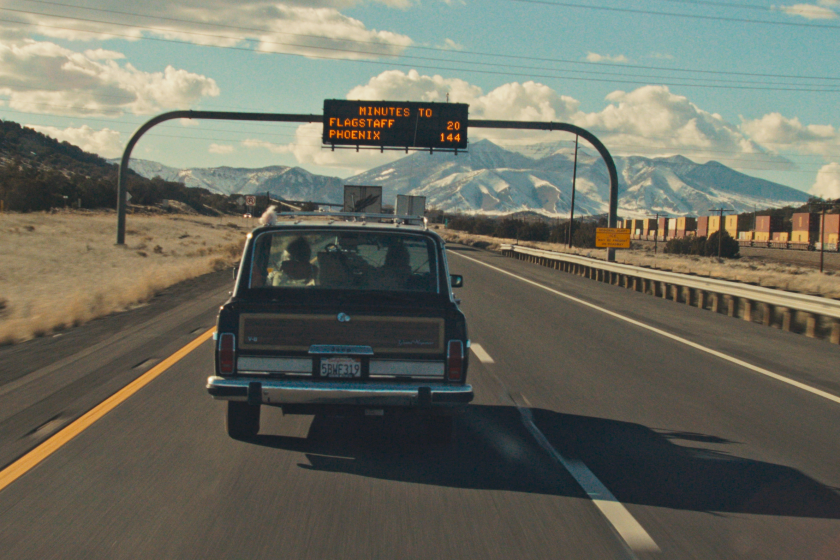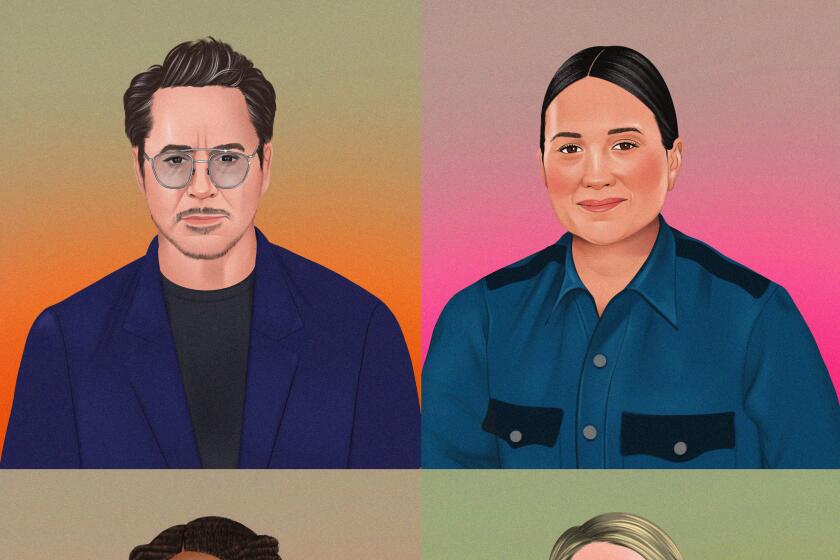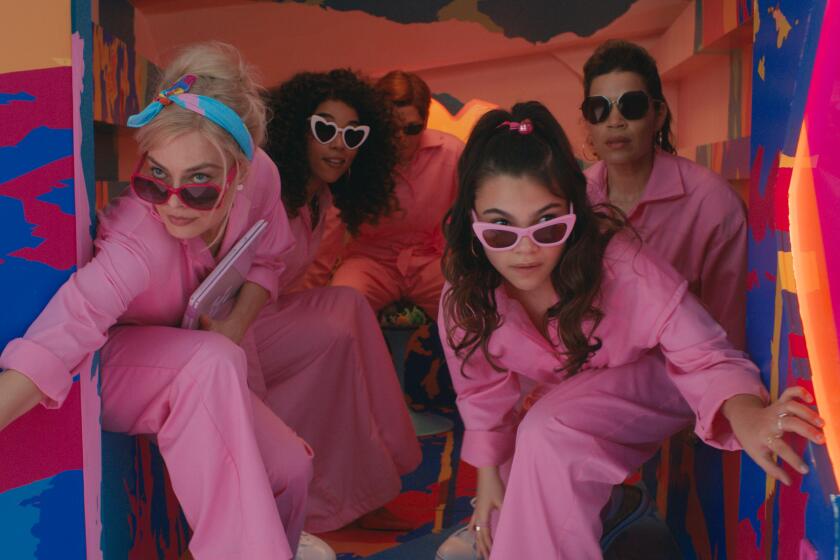Effects go with the flow to keep ‘Compass’ on course
WHEN Mike Fink signed on as visual effects supervisor for “The Golden Compass,” he assumed he would spend much of the film’s two-year schedule on effects associated with the Alethiometer, the golden instrument of the title, which divines the truth and helps the story’s preteen heroine navigate a pseudo-Victorian world rife with dirigibles, Tartar warriors and armored polar bears.
The filmmakers, though, decided that the actors could convey the magic wielded by the clockwork device -- which plays a key role in this first installment of a proposed trilogy adapting Philip Pullman’s “His Dark Materials” novels -- leaving Fink to attend to the rest of the film’s 1,100 visual effects shots. Until two months, ago, that is, when Fink was asked to illustrate the compass’ unique effect using his own CG wizardry.
“What I had hoped to be a yearlong effort to develop a really beautiful piece of eye candy became an eight-week whirlwind,” Fink says.
With time running out, the complex compass he had first imagined was jettisoned in favor of a simpler, more achievable effect: artisans at Digital Domain added digital particles to previously shot footage, making the images emitting from the clockwork mechanism look as if they were composed of magical dust motes.
“I said, ‘The particles should embody the color, the luminance and the chroma of the objects they emit from,’ ” Fink says. “Even though the images were all 2-D, we’d position the edges or bright parts in space, then emit particles from them with a certain life, velocity and turbulence, which made the images feel much more dimensional.”
The abrupt change in direction was only one of several major course corrections Fink and his visual effects crew navigated on a production that sometimes seemed to mirror the characters’ tumultuous journey.
Set in an alternate universe where humans are accompanied by talking animals called daemons, which personify their souls, “The Golden Compass” follows 12-year-old Lyra (Dakota Blue Richards) and her shape-shifting daemon Pantalaimon’s attempts to rescue children who have been kidnapped by a sinister group.
Concerned that the mix of kids and animals might point to disaster -- “It could take a year to train the animals to interact with children, who can only work six hours a day,” Fink says -- he brought in Rhythm & Hues house to conjure the daemons via computer-generated animation, which was supervised by digital animal expert Bill Westenhofer (“The Chronicles of Narnia: The Lion, the Witch and the Wardrobe”).
R&H;’s workload consisted of the hero daemons, including a snow leopard, a vicious golden monkey, a hare and Pantalaimon, who could assume several shapes. “We built 40 different characters, from which we could replicate hundreds of creatures using multiple texture variations and model tweaks,” Westenhofer says.
Most of the daemons speak, but Fink circumnavigated what he called the “cutesy-poo expressiveness” of animated talking critters by insisting that each animal’s body language sell its connection with its person. “We could do a great deal with their eyes, the tilt of their head, instead of mapping human expressions onto their faces,” he says.
The daemons figure prominently in one of the film’s most complex visual effects sequences, the climactic Battle of Bolvangar, which also happens to involve flying witches, marauding polar bears and more. The live action was shot last November and December on a white snow floor against a green screen on the biggest soundstage at England’s Shepperton Studios. But Fink says, “The stage was half the size it should’ve been, so we had to digitally extend the ice floor and add more people.”
The live-action footage was supposed to be edited by February, but what was there didn’t tell the requisite story. Reshoots ensued, the Bolvangar shot count doubled and Digital Domain was hired to help Cinesite finish the virtual environment on a whirlwind schedule. It was only after the digital terrain was built and rendered that Rhythm & Hues’ animators could begin animating the daemons.
Matters became more complicated still after actor Ian McKellen was hired to revoice the deposed king of the armored bears, Iorek Byrnison.
“They said, ‘Just keep animating, and we’ll have Ian lip-sync,’ ” Fink says. “I said, ‘I don’t think you want to pay Ian McKellen to imitate somebody else’s performance.’ And of course they didn’t, so we held up the talking Iorek scenes until Ian recorded his dialogue.”
More to Read
Only good movies
Get the Indie Focus newsletter, Mark Olsen's weekly guide to the world of cinema.
You may occasionally receive promotional content from the Los Angeles Times.










